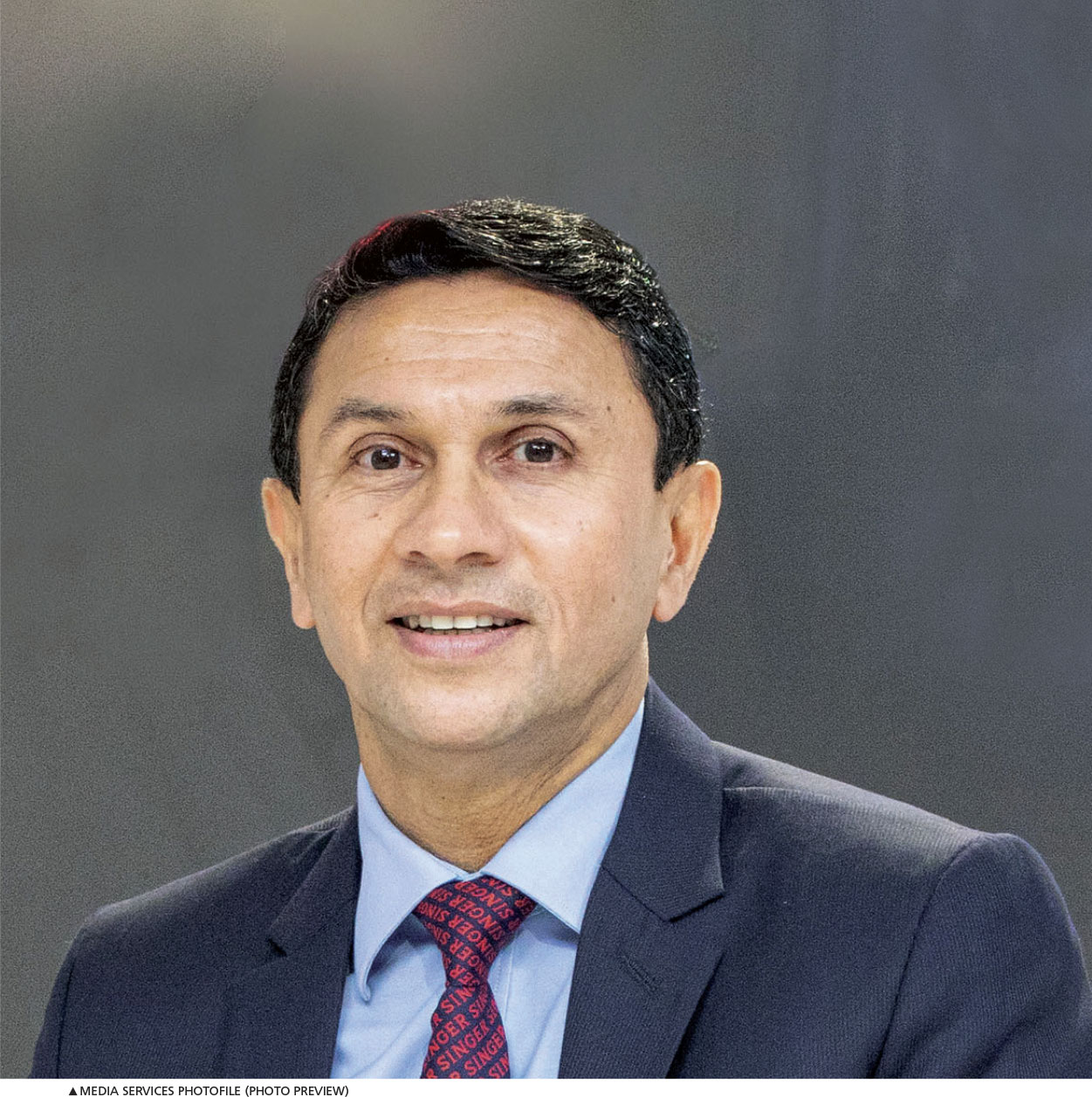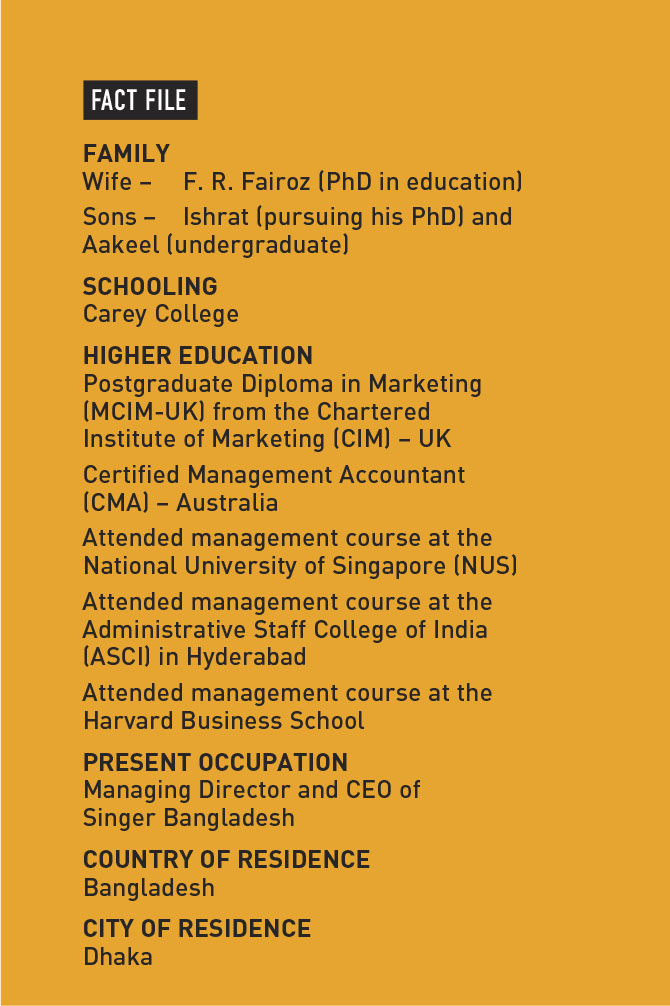Fairoz Haniffa
Consumer electronics evolution

Q: Having worked in both Sri Lanka and Bangladesh, what differences have you observed in consumer behaviour and market dynamics between the two countries?
A: Consumer behaviour is shaped by distinct socioeconomic factors, demographics and income levels.
Sri Lankan consumers prioritise value for money while maintaining quality, influenced by the country’s relatively higher per capita income in South Asia. In the prevailing economic environment, businesses in Sri Lanka have adapted by refining supply chains and product offerings to focus on affordable essentials.
In Bangladesh, the retail landscape is transforming from a traditional to modern business model. Consumers are exposed to global tastes but prefer local brands that provide products and services at competitive prices. The market is expanding, driven by a young workforce and tech savvy population.
In contrast, Sri Lanka’s retail sector is more mature, focussing on long-term stability, established consumer preferences and sustained growth.
Q: In your opinion, what key factors contribute to long-term success and sustainability in the consumer electronics sector?
A: Success depends on market dynamics and evolving consumer preferences. Rapid technological advancements make continuous innovation essential, requiring companies to invest in R&D to meet emerging customer expectations.
In omni channel retailing, seamless integration enhances customer loyalty and satisfaction. Additionally, with rising environmental awareness, sustainable manufacturing and eco-friendly products are increasingly important.
Q: How do you navigate challenges such as evolving consumer preferences, tech advancements and regulatory changes in consumer electronics?
A: The consumer electronics market is constantly evolving, driven by shifting customer preferences and technological advancements. Successfully navigating these challenges requires a strategic approach.
Businesses must analyse customer and market changes over time.
Embracing new technologies and business models, innovating products and services, strengthening customer relationships and ensuring regulatory compliance are key to helping businesses stay agile in a competitive market.
Q: What role does customer feedback and market research play in shaping product development and marketing strategies in the sector?
A: Customer feedback and market research are crucial in shaping marketing strategies and enhancing satisfaction in the consumer electronics sector. It provides insights into preferences, pain points and trends.
Understanding consumer behaviour enables personalised campaigns, tailored messaging and effective pricing strategies, also allowing businesses to adapt to regional preferences and technological advancements.
Q: What are the most promising segments for business growth and investment in Bangladesh and Sri Lanka, particularly in the consumer electronics sector?
A: Once seen as luxury items, consumer electronics have become essential in Bangladesh and Sri Lanka, due to urbanisation and a growing middle income class.
Refrigerators and televisions dominate the market; but evolving customer preferences, especially among young buyers, are driving demand for portable and user-friendly home appliances – for example, microwaves and air fryers.
Due to climate change, air conditioners are another potential product for both markets with most consumers seeking energy saving eco-friendly products even if they cost more.
Q: What role does infrastructure development and technological advancement play, in shaping the consumer electronics markets in Bangladesh and Sri Lanka?
A: Advanced manufacturing facilities and improved infrastructure are enhancing production efficiency. Bangladesh benefits from cost advantages, enabling the supply of affordable products.
Commencing component manufacturing will enhance cost efficiencies in both countries and open new export avenues.
Digitisation is another key driver in both markets; it improves digital connectivity and boosts e-commerce growth. The rise of mobile financial services has strengthened the local electronics sector, making products more accessible and enhancing consumer engagement.
Q: And what key cultural and social factors should companies be mindful of when marketing consumer electronics products in Bangladesh?
A: Companies should leverage major festivals like Eid, Bengali New Year and Durga Puja. Offering promotional discounts, bundle deals, exchange offers and instalment payment options will appeal to price sensitive consumers.
In terms of promotion and communications, businesses must be mindful of social and religious factors – e.g. dress codes, cultural norms, language sensitivity and ethical marketing practices – to ensure their messaging aligns with local values.
Q: What do you believe will be the most disruptive force or trend in consumer electronics in the next five years? And how should companies adapt to it?
A: The consumer electronics sector is rapidly evolving with AI and technological advancements replacing traditional technologies.
Consumers prioritise convenience and efficiency, choosing products that simplify daily life. Digitisation and AI are turning this vision into reality while growing environmental awareness is increasing demand for sustainable products.
The most disruptive force will most likely be the integration of AI and IoT, transforming smart devices, automation and personalisation.
To stay competitive, companies must embrace innovation, invest in R&D, expand digital infrastructure, leverage data analytics for personalised experiences and adopt sustainable manufacturing for eco-friendly products.



